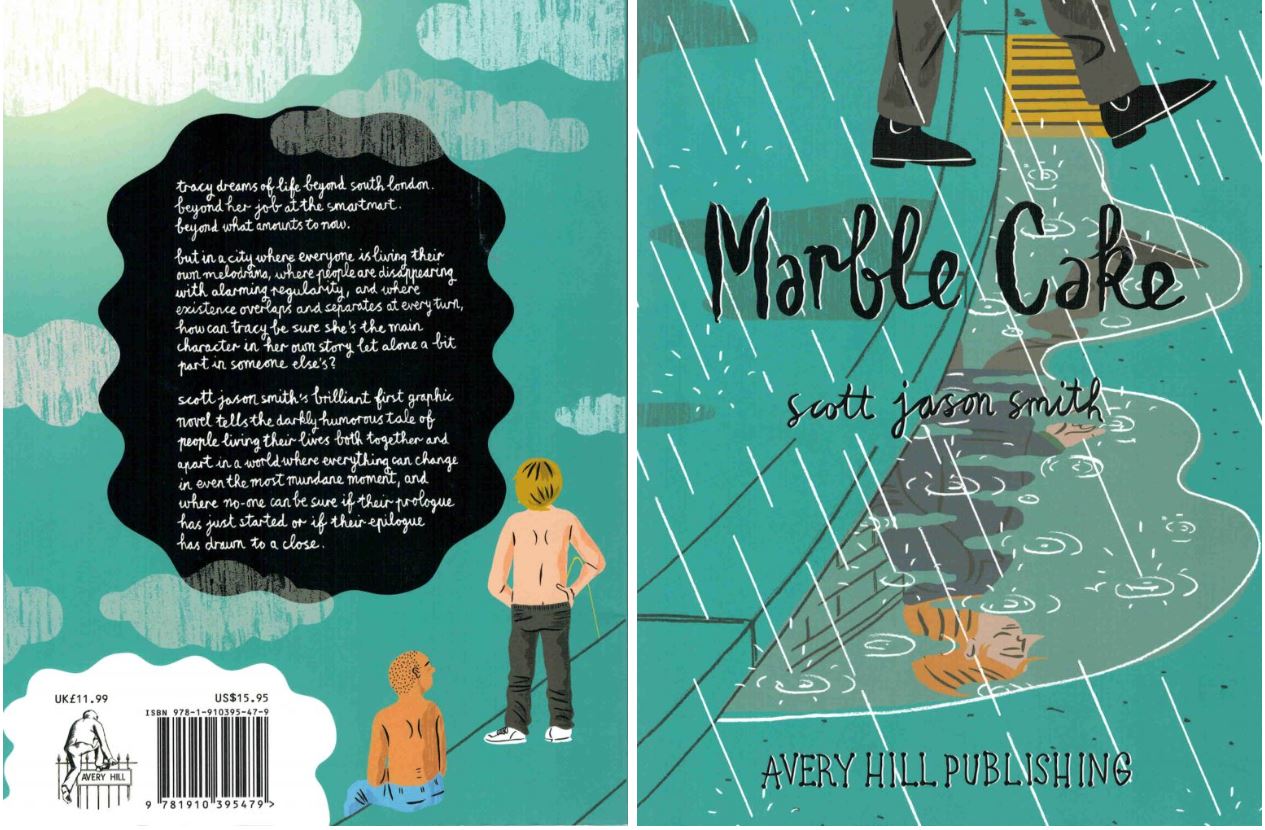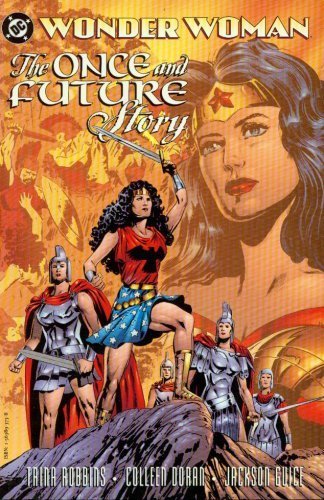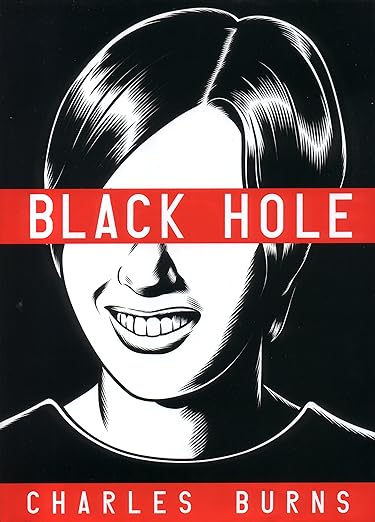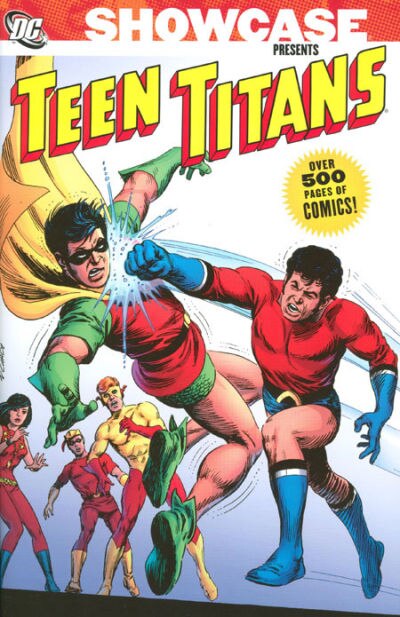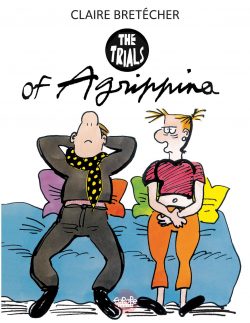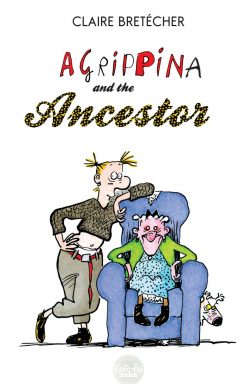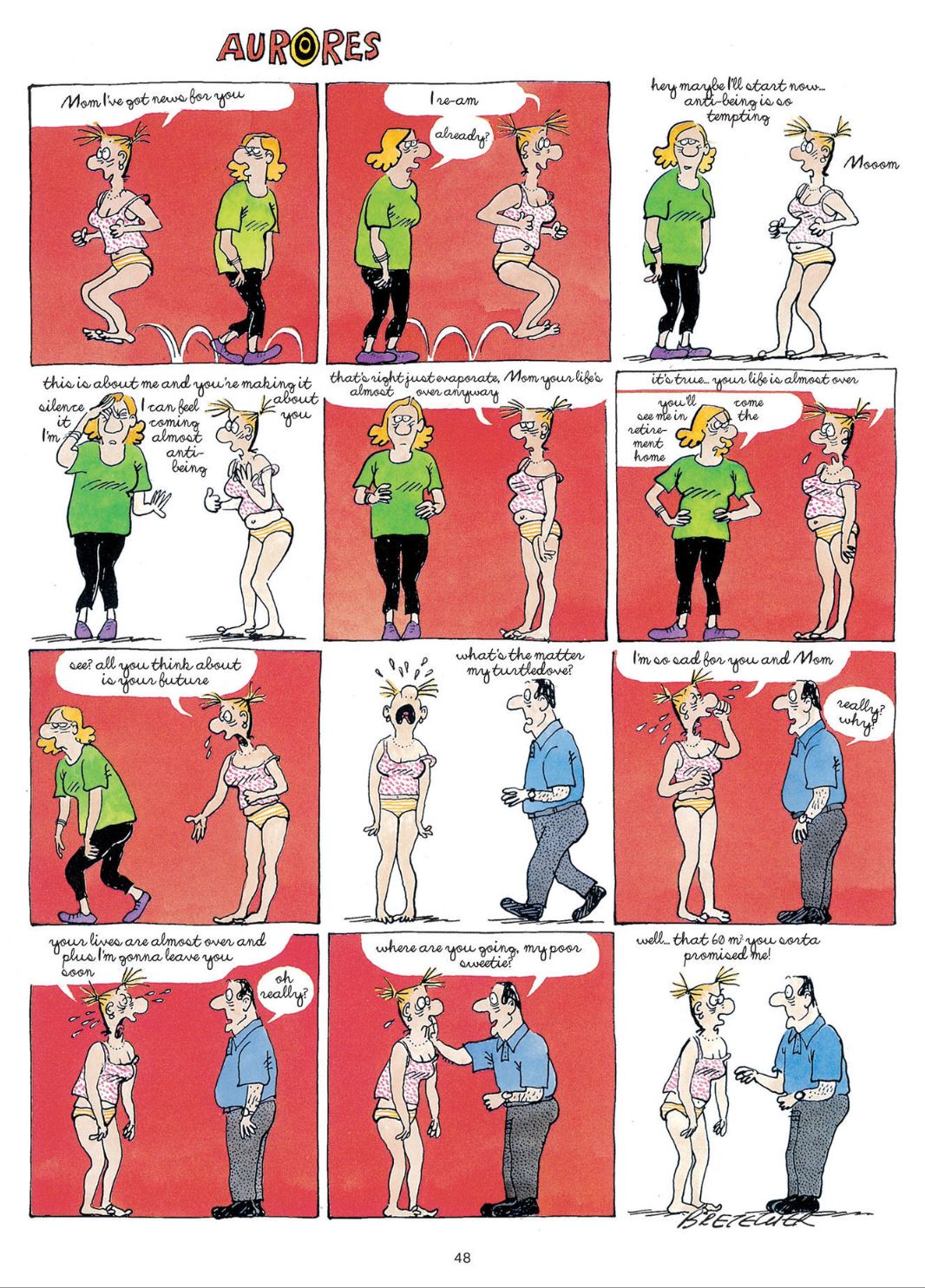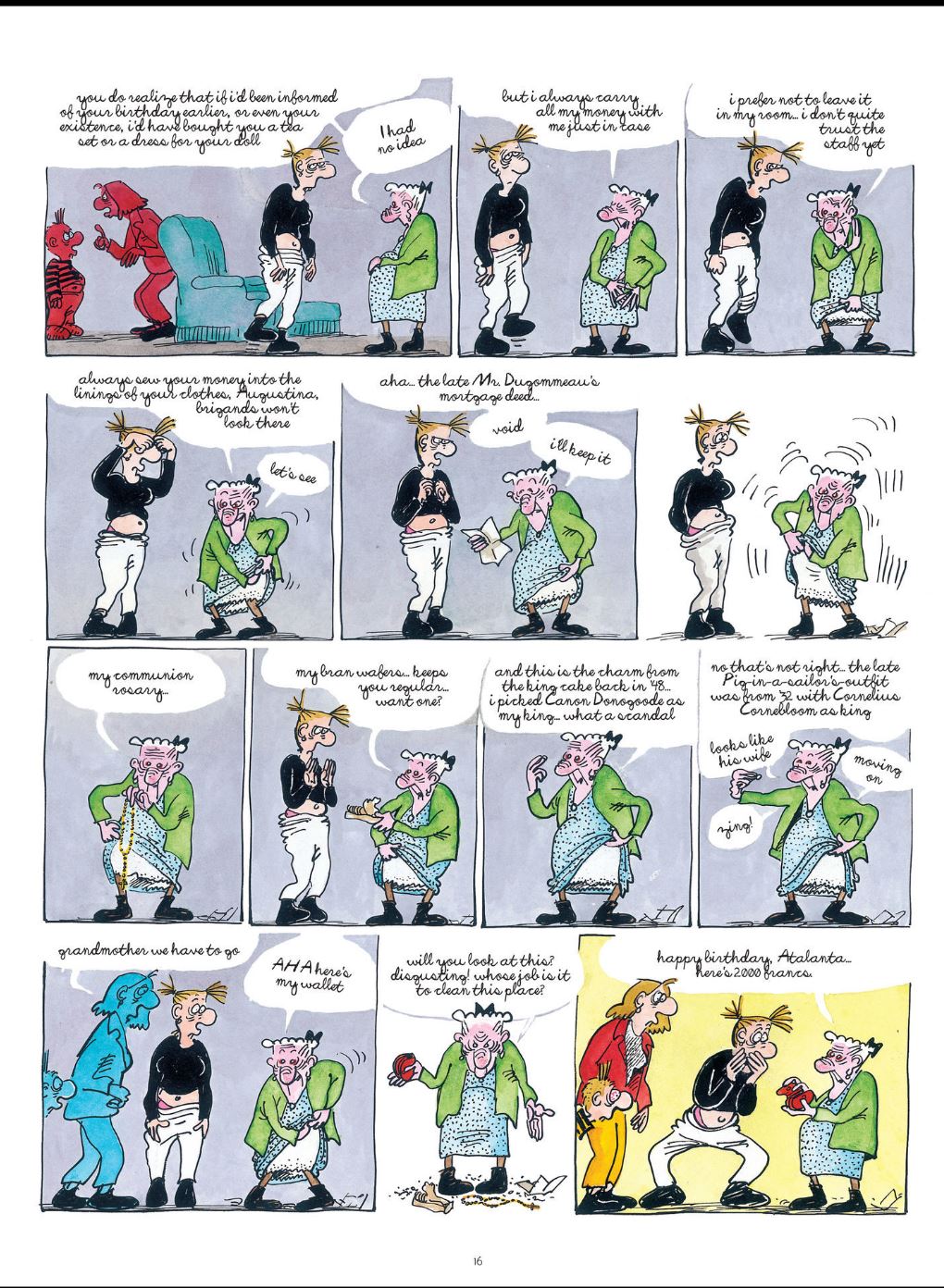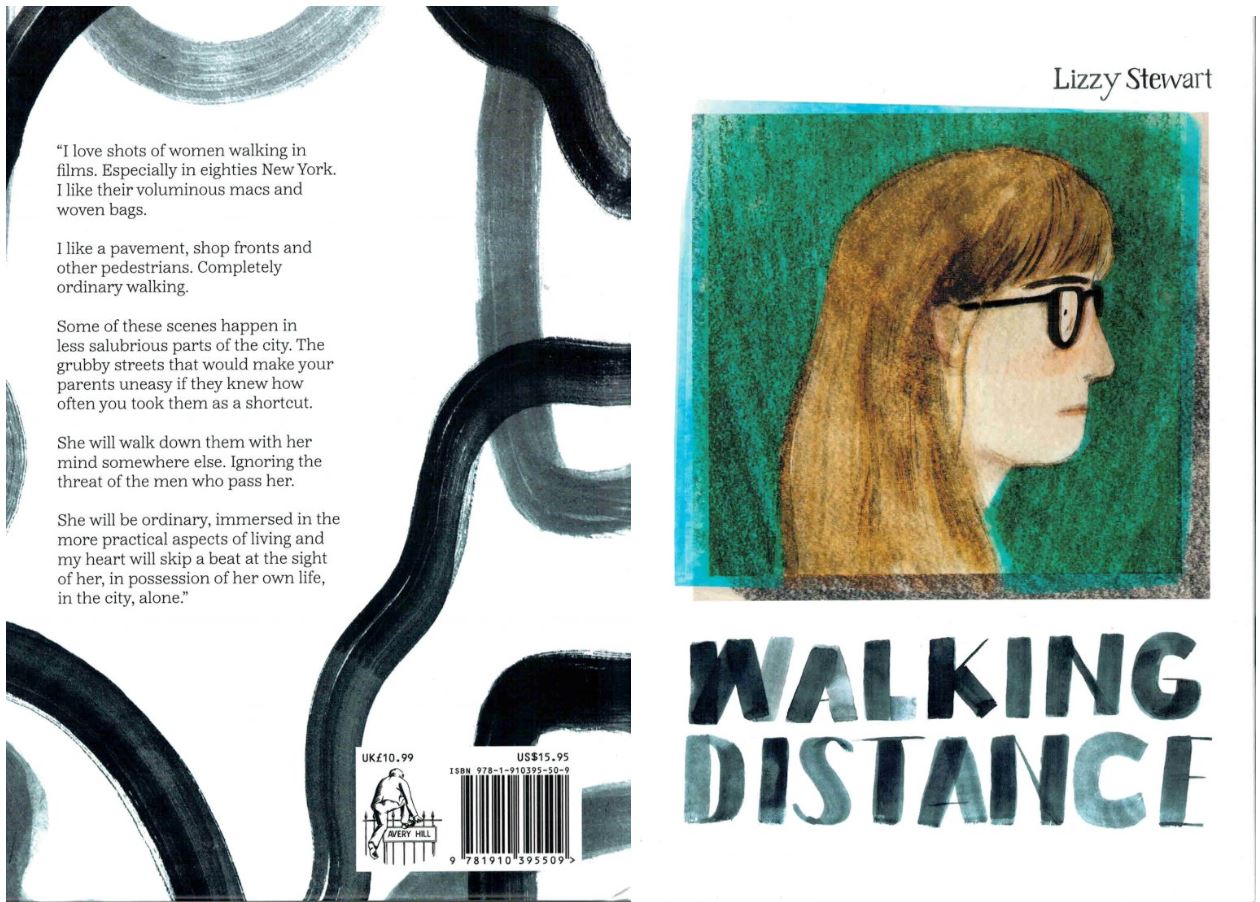

By Jay Kinney, Paul Mavrides, Clifford Harper, Gerhard Seyfried, Spain Rodriguez, Melinda Gebbie, Gilbert Shelton, Épistolier, Volny, Michel Troblin, John R. Burnham, Ruby Ray, Steve Stiles, Sharon Rudahl, Peter Pontiac, Guy Colwell, Matt Feazell, Gary Panter, Donald Rooum, Albo Helm, Adam Cornford, Norman Dog, Greg Irons, Steve Lafler, David Lester, brooke Lydbrooke, Pepe Moreno, Harry S. Robins, R. Diggs, S. Zorca, Byron Werner, & various, compiled and edited by Kinney (PM Press)
ISBN: 978-1-60486-531-8 (TPB/Digital edition)
During the “anything goes” 1960s and early1970s issues of personal freedom, sexual liberation, mind-altering self-exploration, questioning of authority and a general rejection of the old ways gripped the young and terrified the establishment. Artists and cartoonists especially began creating the kind of comics and art they wanted and an “Underground Commix movement” became the forefront for “radicalisation” (that’s “The Man’s” terms not mine) of many young intellectuals in America and throughout the world. It consequently led to the rise of and acceptance of comics narrative for adults.
Whenever anybody discusses the history and influence of the Underground and Counter-Culture movements, focus is generally on the exuberant and often racially or sexually offensive expressions of comedic or violent excess – especially in regard to sex and drugs – but that’s a rather cruel and biased oversimplification. The whole phenomenon stemmed from rebellion and the exercise of new-found freedoms. Equally apparent was a striving for new ways of living one’s life – and that’s Politics, Baby, pure and simple…
By 1978 that unchecked artistic flourishing had died back in every sphere – especially the wholesale creation of comics – and the mainstream world, having assimilated what it liked of the explosively fresh thought and deeds, appropriated or adopted some of the tone and tenets of the movement before getting back to making money and suppressing masses in a “new normal”…
However, once creative passions have been aroused and stoked they are hard to suppress. There is no more powerful medium of expression or tool of social change than graphic narrative – although music and poetry come close – and some kids found it harder to surrender their ideals than others. In 1977, as Disco, indolence, hedonism and the pursuit of money increasingly obsessed media and populace, a bunch of left-leaning liberal intellectual cartoonists got together in San Francisco. They wanted to create a comics anthology dedicated to propounding ideals of willing co-operation, personal responsibility and a rejection of unwanted oppressive authority – governmental, religious or corporate. By entertaining and educating through cartoons they intended to highlight issues of inequality and iniquity: in short, they went to bat for Anarchy…
Just as the global Punk movement began to take hold in a new generation of angry, powerless and disenfranchised Youth, West Coast cartoonist, satirist designer, editor and socialist political activist Jay Kinney – who had co-created the seminal underground title Young Lust (and yes that was a pun; so sue me!) – reached out to like-minded old associates like Paul Mavrides with the intention of creating an international comic book to promulgate their world view.
Kinney had been corresponding with British Anarchist artist Clifford Harper (Class War Comics) and had similarly-inclined West German cartoonist Gerhard Seyfried kipping on his floor at that time, so the idea of a forum for graphic expression of political ideas must have seemed like a no-brainer…
Of course, there’s no such thing as slavish doctrinaire consensus in Anarchist idealism – that’s pretty much the whole point – and the comic was envisioned more as a platform to present wide-ranging Left-Libertarian ideas through satire and historical reportage as a basis for further debate.
How the project developed from there and its ultimate effects and influence is fully described in author/historian Paul Buhle’s ‘Anarchy Comics Revisited’ and Kinney’s own expansive, evocative ‘Introduction’ before the entire 4-issue, 9-year run is re-presented in all its monochrome glory. beginning with Anarchy Comics #1 from 1978. It sports a witty cover by Kinney and deliciously wry intro page Inside Cover by Kinney & Seyfried. The editor then opened the attack with ‘Too Real’: using collage images from comic book ads to spoof the American Dream of prosperity and suburban bliss, after which counterculture legend Spain Rodriguez recounts the story of ‘Nestor Makhno’ whose fight for independence led to his betrayal by his Soviet allies in the early days of their Revolution.
Kinney’s ‘Smarmy Comics’ presents a decade of strip spoofs dedicated to exposing ‘Fascism: the Power to Finance Capital Itself’, after which the amazing Melinda Gebbie constructs a strident feminist call to arms against female oppression in educational diatribe ‘The Quilting Bee’ before Spain returns with a brutal true tale of the Spanish Civil War ‘Blood and Sky’ and an Underground superstar offers a frightening prognostication in ‘Gilbert Shelton’s Advanced International Motoring Tips’…
For someone with no appreciable budget or resources, Kinney was astonishingly successful in securing international contributions. From France’s L’echo Des Savannes #29 came a translated tale of more Bolshevik perfidy in ‘Liberty Through the Ages: Kronstadt’ by Épistolier (Yves Frémion) & Volny (Françoise Dupuy) wherein a local dispute escalates into an horrific early instance of merciless repression in the People’s Paradise, before Bay area cartoonist John R. Burnham challenges the future with his polemical ‘What’s the Difference?’
True Brit Clifford Harper offers a moving and witty account of grass roots resistance in the tale of ‘Owd Nancy’s Petticoat’ (set in the aftermath of the Peterloo Massacre), after which Kinney delivers wry Comic Strip parodies ‘Safehouse’, ‘On Contradiction’ and ‘Today’s Rhetoric’ – complete with faux ad – before Mavrides hilariously attacks the utopian/dystopian debate with ‘Some Straight Talk about Anarchy’. The issue ends with a stylish ad for like-minded publications from Kinney & Seyfried, which last also crafted a humorous depiction of a mass anarchist demonstration in Tiananmen Square 11 years before the tragic, monstrous real thing…
Issue #2 didn’t appear until 1979 and opened with a photographic punk cover by Ruby Ray & Kinney, with the latter & Seyfried collaborating on another hilarious introductory page before the fireworks kicked off with Steve Stiles’ chilling account of his brush with Military Intelligence. Once the brass realised he might have had associations with turn-of-the-century Labour Movement The Industrial Workers of the World, the baffled soldier-boy found himself suspected of crimes he didn’t know existed. How the ‘Wobblies!’ could subvert a hapless GI in 1967 is still unclear to the author of this smart but scary tale…
‘Believe It!’ by Sharon Rudahl exposes true but crazy beliefs from history whilst
‘Kultur Dokuments’ (Kinney & Mavrides) brilliantly blends styles and metaphors to harangue the working world in a clever tale that starts as pictograms and ends as a vicious swipe at Archie Comics. Harper then adapts “Bert” Brecht’s grim ballad ‘The Black Freighter’ (perhaps better known in English as “Pirate Jenny” via Kurt Weill’s Threepenny Opera), Spain details the life of Civil War freedom-fighter Buenaventura ‘Durruti’ and Dutch artist Peter Pontiac exposes sexual fantasy and other anti-spontaneity heresies in ‘Romantic! Anarchy’ before Kinney dryly restores order with spoof talk-show ‘Radical Reflections’.
Épistolier & Michel Trublin relate how radicals Jerry Rubin and Abbie Hoffman changed the smugly complacent nature of Wall Street in ‘Liberty Through the Ages: The Yippies at the Exchange’ before Gebbie potently limns illustrated ‘Quotes from Red Emma’ (Goldman) after which ‘The Bizarre yet Familiar World of Commodity Fetishism!’ (Kinney) embellishes a Seyfried Inside back-cover ad with the glorious whole finished off in a painted Black Velvet portrait of Chairman Mao by Mavrides.
Anarchy Comics #3 arrived in 1981, sporting a traditional anarchic rampaging rogue by Pontiac & Guy Colwell and – after a clever introduction by Kinney & Mavrides – proceeds with the duo’s hilariously dark time-travel tale ‘No Exit’ showing how even the perfect future can’t please some activists. Next is Épistolier & Trublin’s trenchant examination of Church repression of workers in ‘Anarchy in the Alsace: The Revolt of the Rustauds’ and a welcome appearance for Donald Rooum’s iconic feline thought-experiment Wildcat.

Rooum was a spectacularly talented, gentle, fiercely pacifist freedom-fighter, educator and eternal knowledge seeker who contributed brilliant cartoons to British comics, magazines and the Anarchist press for over 60 years. His Wildcat cartoons have been collected continually and are a must have item whatever your political leaning…
The merriment continues in ‘The Act of Creation According to Bakunin’ by Dutch cartoonist Albo Helm, giving the genesis myth a thorough re-evaluation, after which Harper interprets French politician/philosopher Pierre-Joseph Proudhon’s pointed ‘What is Government?’ with telling graphic savagery.
More of Kinney’s ‘Radical Reflections’ follow before Spain (with Adam Cornford & Kinney) examines the rise of the Red Brigade through Italian labour agitation and student unrest via ‘Roman Spring’, whilst Steve Laffler restores much-needed absurdity through deployment of rude, anti-Capitalist superhero the ‘Naked Avenger’.
Seyfried crafts a sharp display of police mentality in ‘Walkie Talkie’ before then relative newcomer Gary Panter plays with traditional bomb-throwing view of anarchists in his vicious comedy ‘Awake, Purox, Awake!’, whilst Gebbie & Cornford collaborate on a psychedelic tribute to ‘Benjamin Peret: Poet as Revolutionary and Rudahl supplies a slyly effective castigation of workers’ children-turned-capitalists in ‘The Treasure of Cabo Santiago’.
Comix iconoclast Greg Irons is represented here with moodily scary tale ‘Who’s in Charge Here?’ and Canadian cartoonist David Lester tackles sexual politics and the New Man in ‘Men Strips: Men March On’, ‘The Amazing Colossal Men’ and ‘The March of Men’ before Marian (now just brooke) Lydbrooke spoofs marital oppression in ‘At Home With…’ with Kinney exploring similar territory in ‘New Age Politics’.
Matt (Amazing Cynicalman) Feazell debuted here with an impressive bug-eyed view of class warfare and divisive manipulation by the bosses in the excellent ‘Pest Control’ before Kinney & Seyfried cobble together an inside back-cover ‘Bulletin Board’ and the garrulous German ends the issue with a classy spoof ad touting ‘New! Improved! Anarchy’ to end all our global pest woes…
After this issue Kinney’s time was increasingly taken up with other projects, and it wasn’t until 1987 that new editor Mavrides released Anarchy Comics #4, with both cover and introduction page products of his sublimely prolific satirist’s pen. He nonetheless joined with Kinney on apocalyptic parody on the End of Days ‘Armageddon Outahere! before the always challenging Harper contributes a terrifyingly true case regarding British poet Jimmy Heather-Hayes’ death in police custody at Ashford Prison, Kent ‘On the Night of March 3, 1982’.
Norman Dog creates a choose-your-own-ending role-playing strip in ‘You Rule the World!’ and Spain details the fall of Emperor Napoleon III, the entire Franco-Prussian War and the meteoric coming and going of the Communards in ‘1871’, after which Gebbie relates her own clash with British censorship in magically metaphoric fable ‘Public Enemy’.
‘Mr. Helpful’ is a more traditional cartoon quandary posed by Norman Dog whilst S. Zorca’s prose vignette ‘Executive Terrorism’ take a hefty swipe at Presidential Privilege and R. Diggs goes for the jugular in his logical extension of economic Darwinism ‘Korporate-Rex’.
The final issue closes with Harry S. Robins tapped into his Church of the SubGenius roots, addressing the apparent dichotomy of the philosophy in ‘Anarchy = Panarchy’ before Byron Werner’s ‘One-page strip’ suggests the only way we can rationally deal with intelligent extraterrestrial life, Mavrides & Kinney clashwith the Military-Industrial Complex in ‘Cover-up Lowdown’ and a final Back Cover offers a photo of Hiroshima after all the dust settled…
As you’d expect, this fabulous collection doesn’t stick to tradition, and after a standard section of contributing Cartoonist Biographies, and a sumptuous colour section including all covers, Outtakes, Sketches Roughs and a fulsome photographic Anarchy Comics Family Album, a New Comix addendum features a stunning new strip which would certainly have been in a fifth issue… if there had been one.
‘The Amazing Tale of Victoria Woodhull’ by Rudahl depicts the life of the most incredible woman you’ve never heard of: a libertine, suffragette, opportunist and crusader for women’s rights and female emancipation who started out as an American white trash huckster and died the wife of a British aristocrat.
This is followed by Sketchbook Drawings and Outtakes from Kinney, revealing abortive ideas and graphic dead ends such as Anarchy Chic, Shoot-Out at the Circle A Ranch, Revolt, Sectarianism, Marx my Words, spoof political mags, the Amazing Rhetoric Translator and the marvellous Oppressive Dichotomies – all strips that might well have found fans… if…
A stunning reminiscence of a time when we thought the world could still be changed and, hopefully, a stark example for the current generation who just won’t take it anymore, Anarchy Comics is still, funny, powerful, inspirational and out there.
And that’s not up for debate…
© 2013 Jay Kinney, Paul Mavrides and respective writers & artists. All rights reserved.







